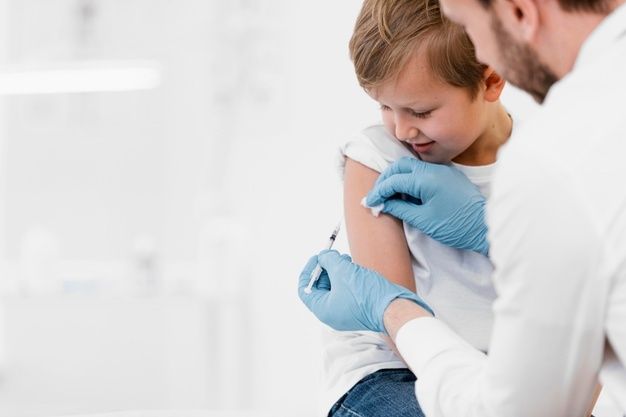
How Updated Vaccines for Kids Reduce Disease Resurgence
In central Ohio, at least 77 children have contracted measles, a disease that has been eliminated from the United States for more than 20 years. Almost all these children are under age five, making the outbreak even more dangerous. As the largest measles outbreak since 2019, it may stem from growing vaccine resistance across the country.
According to the Kaiser Family Foundation, 28% of adults surveyed last summer are against vaccine requirements for kids entering kindergarten. Compared to 16% of adults in 2019, this jump increases the potential for disease resurgence of formerly controlled diseases. Staying up to date on your child’s routine vaccination schedule prevents them from catching these diseases and lessens disease severity if they do become ill. It also protects the community around you and prevents dangerous consequences of disease.
Why Is Disease Resurgence Dangerous?
Many diseases controlled by vaccines can lead to hospitalization, long-term effects, and death. Children who don’t receive their scheduled vaccinations have a higher risk of getting sick. While many children may recover fully from these illnesses, others live with chronic conditions and disabilities—or even die—as a result of contracting vaccine-preventable diseases through disease resurgence. When it comes to measles, about one in five people become hospitalized. Of more than 80 cases in the Ohio outbreak this year, 32 people have been hospitalized for treatment.
Many other preventable diseases can return in different forms later. For example, the chickenpox virus lives in the body and can come back as shingles decades later, causing serious illness and complications. When these kinds of diseases have a resurgence, it puts people—especially members of vulnerable populations, like children—at risk of these complications.
Additionally, the recent political climate has impacted parents’ hesitation to vaccinate their children, often minimizing the consequences of disease resurgence. Over the course of the COVID-19 pandemic, the number of adults who oppose childhood vaccinations has nearly doubled, in part due to political messaging surrounding vaccines. Making public health a political issue has put more children at risk and increased the likelihood of disease resurgence, as many people cite their political views as a reason not to vaccinate. In the United States, areas with higher percentages of Republican voters tend to have lower vaccination rates, which has led to fewer childhood vaccinations in those areas and more opportunity for preventable diseases to spread.
How Do Childhood Vaccines Prevent Disease Resurgence?
Children who receive their scheduled vaccines on time have a lower chance of catching and spreading preventable diseases to others. Vaccines help boost children’s immunity without having to actually contract the illness.
If you’re a parent, you know how curious kids are and how they experience the world around them with all their senses. They put things in their mouths, touch dirty surfaces, and have close contact with many new people, all of which come together in a perfect storm for disease transmission. Receiving the recommended 16 childhood vaccines protects your child against 14 diseases, including measles, chickenpox, and many others that were once considered typical to contract in childhood.
Vaccines create herd immunity, which gives diseases fewer host options and protects everyone, including immunocompromised people and those who may not be able to get vaccinated. Vaccines prevent disease resurgence by eliminating host options, and when you vaccinate your child, you reduce the likelihood of them becoming one.
How Can Public Health Communicators Reduce Vaccine Hesitancy?
Education is the best way to show how vaccines benefit people, and a large part of that means engaging parents and understanding what makes them hesitant to vaccinate their kids. A 2022 study from the Wolters Kluwer Public Health Emergency Collection showed that although efforts to increase vaccination rates are being made, they’re targeting general groups and not necessarily those that need the information most.
One of the most important things you can do as a public health communicator is to engage the community and address specific concerns that hesitant parents have. Creating positive dialogues and knowing when and how to address misinformation and disinformation becomes key to reducing vaccine hesitancy. The methods used to approach these topics matter, too, as you can increase vaccine uptake without reducing hesitancy. However, it’s important to minimize hesitancy to show how vaccines benefit children and cultivate a lasting understanding of why vaccines are necessary.
With misinformation, political involvement once again becomes an obstacle. When someone trusts a political leader, they may be more hesitant to accept information that contradicts what they have previously heard. Connecting with vaccine-hesitant parents on an emotional level becomes vital, as you can learn more about the source of their hesitation and tackle the issue as it relates to their perspective.
Preventing disease resurgence is crucial to keeping children healthy across the globe. By staying up to date on vaccines, you can protect your child against contracting a preventable disease, even during an outbreak like measles, and stop them from spreading the disease to others. To find out which vaccines your child needs before they turn 18, visit the CDC website.
Research and materials for this article were compiled, written, and distributed on behalf of the National Public Health Information Coalition. The views and opinions expressed in this blog are those of the various authors and do not necessarily reflect the official policy or position of the National Public Health Information Coalition or its members.

